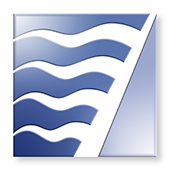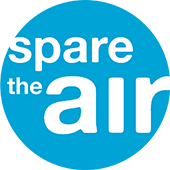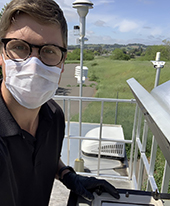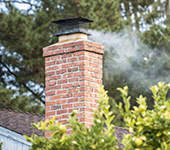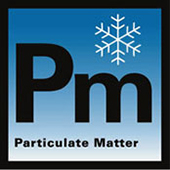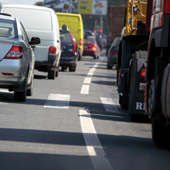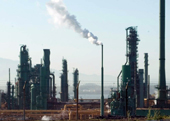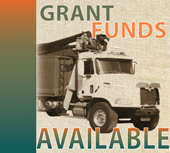|
|

|
|
|
|
May 2020 l Volume 2020-2
|
|
|
|
|
|
|
IIn this issue, you’ll find three articles that explain how the Air District is continuing to conduct its essential operations during the COVID-19 shelter-in-place order, as well as an article on the Air District's promotion of teleworking as Spare the Air season begins and a recommendation that Bay Area residents not burn word to protect the health of their neighbors during this challenging period. This issue also includes statements by the Air District’s executive officer about the U.S. EPA’s decision not to reopen the federal standard for fine particulate matter pollution, and about the government’s passage of the SAFE vehicle standards. Other articles cover a settlement with Chevron USA Inc. and a summary of current and upcoming grant opportunities.
|
|
|
|
|
|
|
|
|
|
|
|
|
|
Air District Continues Essential Operations During Shelter-in-Place Order
|
|
| | |
|
During this challenging time, the Air District wants to reassure Bay Area residents that air quality and public health are being protected while state and local COVID-19 shelter-in-place orders are in effect. Although the 375 Beale Street office in San Francisco is closed until further notice, the essential functions of the Air District - including air quality monitoring and forecasting, the enforcement of air quality regulations, and response to air quality complaints – have continued.
Air District inspectors are conducting facility inspections and air quality complaints are being investigated. Facilities must continue to follow all air quality regulations and permit requirements - if not, the Air District will continue to issue Notices of Violation.
All other Air District functions are being handled remotely until the state and local shelter-in-place orders are lifted.
In addition, the Air District’s engineering staff will prioritize and expedite permits for businesses and organizations changing or repurposing operations to aid in the public health response to COVID-19. Read our instructions for applying for Expedited Permits for COVID-19.
Board, Hearing Board, and Advisory Council Meetings Continue
To continue the essential work of the Air District, regularly scheduled Air District Board and Committee meetings will be webcast from remote locations. Information about Air District meetings is available on our Board Agendas and Minutes page, our Hearing Board Agendas page, and our Advisory Council Agendas page.
Meeting webcasts and agendas can also be viewed in the Air District Webcast box on the Air District's homepage.
|
|
|
|
|
|
|
|
|
|
|
|
|
Air District Encourages Teleworking as Spare the Air Smog Season Begins
|
|
| | |
|
The start of the Bay Area’s Spare the Air summer smog season begins Monday, May 4.
With traffic levels at record lows during the shelter-in-place, air quality has been good throughout the region. While weather conditions have had a positive effect on air quality, major reductions in traffic, the top source of pollution in the Bay Area, have also been a significant factor. These challenging times have demonstrated that teleworking can be a viable, flexible work option that benefits not only air quality, but employers and employees as well. As Bay Area employers create plans to safely reopen their doors and continue operations once shelter-in-place orders are eased, the Air District urges them not to lose sight of the benefits that reducing traffic can bring - teleworking can be part of the solution to keeping our skies blue.
There are estimates that traffic in the region has been reduced by 70 percent or more during the shelter-in-place. Based on this 70 percent reduction in traffic, the Air District estimates that fine particulates, or PM2.5, will be reduced by 20 percent, oxides of nitrogen, or NOx, will be reduced by 38 percent and carbon dioxide, or CO2 emissions, will be down by 26 percent.
The benefits of teleworking include:
- Reduced traffic congestion
- Reduced commute time
- Cost savings for employers and employees
- Improved employee recruitment and retention
- Improved work-life balance
- Increased ability to effectively continue business as a part of a disaster recovery or emergency plan
The launch of the Spare the Air smog season also coincides with the start of the 2020 Air Quality Awareness Week, a nationwide campaign to increase air quality awareness and inspire people to take steps to reduce their contribution to air pollution.
During the warmer weather months, Spare the Air Alerts are issued when smog, or ozone pollution, is forecast to reach unhealthy levels. Ozone can cause throat irritation, congestion and chest pain. It can trigger asthma, inflame the lining of the lungs and worsen bronchitis and emphysema. Ozone pollution is particularly harmful for young children, seniors and those with respiratory and heart conditions. When a Spare the Air Alert is called, residents should limit outdoor exercise in the late afternoon when ozone concentrations are highest.
Here's how to know when a Spare the Air Alert is in effect:
|
|
|
|
|
|
|
|
|
|
|
|
|
Air Quality Monitoring and Forecasting Continue During Shelter-in-Place
|
|
| | |
|
The Air District is taking steps to ensure that Bay Area air quality and public health are protected while the shelter-in-place order is in effect. Staff are working diligently to continue serving the public without interruption. Essential functions of the Air District, as defined by the shelter-in-place order - including air quality monitoring and forecasting - will continue. The Air District issues air quality forecasts that predict pollution levels 365 days a year, including on weekends and holidays. Computer-generated forecasting models and air quality data allow meteorologists to issue accurate forecasts that residents across the region rely on to make health-informed decisions.
To ensure that forecasts are issued, meteorologists will continue to interpret weather and air quality data from home by utilizing a unique forecasting machine located at the Air District headquarters, which operators now access remotely by logging into the server using their individual credentials.
Previously, a team of meteorologists would work together in-person to discuss seasonal weather changes and other factors that influence pollution levels. Now, they work from home during the shelter-in-place order to help reduce the spread of COVID-19 and communicate via online tools.
The air monitoring equipment that provides the data used to produce air quality forecasts also requires on-site staff to maintain operability. Field operators are primarily responsible for maintaining the air monitoring sites in the Air District’s air monitoring network, and equipment at each site must be checked daily to ensure data is being collected.
“It’s quite amazing to see how dedicated our staff are,” said Ila Perkins, Assistant Manager of the Meteorology & Measurements Division. “They love what they do and work hard to make sure that we have no interruption of operations – they’ve really stepped up to the plate and shown that they are committed to doing the work that they can, as best as they can right now.”
Although field operators’ essential work has not changed, they have changed how they complete tasks.
“The idea is to operate at 100 percent capacity just like before COVID-19, but to reduce the risk of exposure when necessary,” said Senior Air Quality Instrument Specialist Max Dillon. “Some station tasks like checking data, monitoring instrumentation diagnostics and instrument calibrations can all be done remotely by logging into the instruments and operating them through special software.”
Field staff have been able to maintain operations through careful coordination and communication. If an operator needs to access a site, they first reach out to other staff members to make sure no one is at the site or will be at the time they need to enter. Max says that, by taking extra consideration, there are many ways to reduce risk just by viewing tasks through a new lens.
|
|
|
|
|
|
|
|
|
|
|
|
|
Air District Continues Air Quality Enforcement and Engineering Activities
|
|
| | |
|
The Air District will continue to protect the air quality of all Bay Area residents through the duration of the shelter-in-place order. The enforcement of air quality regulations, response to air quality complaints and the issuance of air quality permits for stationary equipment are essential Air District functions which have continued. While the U.S. Environmental Protection Agency has relaxed enforcement of some air quality regulations amidst the pandemic, Air District staff continue to protect public health by working hard to ensure that facilities in the region comply with local air quality regulations. That role is played by the Air District’s Compliance & Enforcement Division.
The Compliance & Enforcement Division is the largest division within the Air District and while some staff members are working from home, many are working out of a field office or conducting patrols in their Air District vehicles. Although little has changed since the shelter-in-place order went into effect, field offices have been stocked with hand sanitizer, wipes, face masks and gloves and inspection staff have moved to electronic processing of paperwork.
“Inspectors are still responding to complaints and enforcing all air quality rules and regulations," says John Marvin, Manager of the Compliance & Enforcement Division. "If we see a violation, we will certainly issue a notice of violation.”
Resolving air quality complaints is an important objective of Air District staff and inspectors are responding to the public, although doing so safely. To avoid personal contact, inspectors are handling most complainant contact by phone rather than by meeting with the complainants in person.
“I think it’s very important to provide good air quality for all those staying at home and especially for health care workers,” said Air Quality Inspector Miguel Zepeda.
The Air District’s Engineering Division began the transition to remote work two weeks prior to the shelter-in-place order to ensure they could continue reviewing projects and issuing air quality permits for stationary equipment that meets regulatory requirements. The division later announced to the regulated community that permits for businesses and organizations changing or repurposing operations to aid in the public health response to COVID-19 will be prioritized and expedited.
Several inquiries have been received regarding the permitting of engines for pop-up tents used at both COVID-19 testing sites and pop-up hospitals. Engineering staff are facilitating the preparation of permit application forms and working with applicants to complete the data and calculate the fees required for these projects deemed to be critical to the COVID-19 response.
|
|
|
|
|
|
|
|
|
|
|
|
|
Air District Asks Public to Not Burn Wood to Keep Pollution Levels Low During Shelter-in-Place Order
|
|
| | |
|
During this challenging time, the Air District is asking the public to not burn wood in their fireplaces, outdoor fire pits or woodstoves during the shelter-in-place order for COVID-19 in order to protect the respiratory health of all Bay Area residents. While air quality is expected to remain good to moderate throughout the Bay Area for the near future, wood burning can impact localized areas and significantly impact indoor air quality.
The fine particulates in smoke can add stress to respiratory and immune systems at a time when everyone is especially apprehensive about staying healthy. The Air District is asking Bay Area residents to please be conscientious of their neighbors, especially the most vulnerable. Preserving good air quality will help everyone during this difficult time, but most especially the elderly and those with asthma or respiratory illnesses.
Unless a Spare the Air Alert is in effect, wood burning is not illegal. However, wood burning is discouraged while the shelter-in-place order is in effect.
Like cigarette smoke, wood smoke contains fine particles and carcinogenic substances that make the air unhealthy to breathe. Wood smoke is the largest source of air pollution in the Bay Area during colder months and is especially harmful to children, the elderly and people with respiratory conditions.
|
|
|
|
|
|
|
|
|
|
|
|
|
Air District Offers Statement on Trump Administration Proposal to Freeze Particulate Matter Standard
|
|
| | |
|
Jack Broadbent, executive officer of the Air District, provided a statement about the Trump administration’s proposal to retain the current National Ambient Air Quality Standard for particulate matter. “Once again, the Trump administration has taken advantage of our current national health crisis to launch an attack on public health. On the heels of a recent Harvard study showing a correlation between higher particulate pollution levels and increased death rates from COVID-19 - and despite recommendations from leading public health professionals - the Environmental Protection Agency has made the unfortunate proposal to keep National Ambient Air Quality Standards for particulate matter at a standstill, instead of taking the opportunity to tighten them. When given the choice between fulfilling their legal and moral obligation to protect public health or loosening the reins on major polluters, the Trump Administration has continued to side wholeheartedly with polluters. The Air District will steadfastly resist any efforts that recklessly endanger the health and well-being of Bay Area residents.”
|
|
|
|
|
|
|
|
|
|
|
|
|
Air District Offers Statement on Trump Administration's Release of the SAFE Vehicles Rule
|
|
| | |
|
Jack Broadbent, executive officer of the Air District, provided the following statement on the federal government’s release of the SAFE Vehicles Rule, which would weaken certain existing fuel economy and greenhouse gas emissions standards for passenger cars and light trucks and establish new standards, for model-year 2021 through 2026 vehicles. “The Trump administration’s release of the SAFE Vehicles Rule in the midst of a national crisis shows a lack of transparency, compassion and common sense. The rule falls well short of the air quality safeguards necessary to protect public health and reduce harmful emissions driving climate change. Placing less-efficient vehicles on our roadways and increasing fuel consumption jeopardizes hard-earned air quality and health progress made over decades - rolling back emissions standards will have real and devastating consequences for California and the Bay Area. Taking advantage of this worldwide emergency to slip this bad policy under the radar while government at all levels is engulfed in the COVID-19 crisis is unconscionable. The Air District will challenge the SAFE Vehicles Rule and will never waiver in our fight to defend our clean car standards and protect the quality of life of all Bay Area residents.”
|
|
|
|
|
|
|
|
|
|
|
|
|
Air District Settles Case with Chevron USA Inc.
|
|
| | |
|
Chevron USA Inc. has agreed with the Air District to pay $146,500 to settle air quality violations at its refinery in Richmond. The settlement covers 33 Notices of Violation issued for air quality violations at the Richmond Oil Refinery during the years 2016 through 2018. The violations addressed in the settlement include:
- Public nuisance violations related to odors emanating from the refinery bio-reactor pond
- Failure to keep an accurate inventory of valves and connectors
- Failure to properly sample flare gas during a flare event
- Combustion of refinery fuel gas with excess concentration of hydrogen sulfide
- Failure to repair a leak at a refinery cooling tower in a timely manner
All the violations that led to this settlement have been corrected.
The Air District issues Notices of Violation when facilities violate a specific air quality regulation or rule. Violators are generally required to respond to the notice within ten days and submit a description of the actions they will take to correct the problem. These actions can include shutting down certain operations immediately, or changing operations or equipment to come into compliance.
All settlement funds will be used to fund Air District activities, such as the inspection and enforcement activities that led to this settlement.
|
|
|
|
|
|
|
|
|
|
|
|
|
Air District Offers Millions in Grants
|
|
| | |
|
The Air District administers a number of grant funding programs that offer incentives for clean air projects. Grant Funding Programs Open Now and Coming Soon
Grant programs for Bay Area businesses and public agencies:
Equipment/Engine Replacement/Repower or Conversion, and Infrastructure
- Carl Moyer Program - $10 million is available for eligible projects that upgrade or replace on-road vehicles, school buses, transit buses, off-road and agricultural equipment, marine equipment, and locomotives. Applications are being accepted on a first-come, first-served, basis until all funds are awarded. www.baaqmd.gov/moyer
- Community Health Protection Grant Program - $40 million is available for eligible projects that reduce toxic air emissions and ozone-forming pollutants from mobile and stationary sources by replacing old, high-polluting vehicles and equipment. Priority is given to projects in the AB 617-identified communities of West Oakland, Richmond-San Pablo, East Oakland/San Leandro, Eastern San Francisco, Pittsburg-Bay Point area, San Jose, Tri-Valley area, and Vallejo. Community input will play an important role in guiding the Air District’s outreach and process for identifying priority projects. Applications are being accepted on a first-come, first-served basis until all funds are awarded to owners of eligible equipment and vehicles by June 2020. www.baaqmd.gov/ab617grants
- Lower-Emission School Bus Program - Funding is available for public school districts, Joint Powers Authorities (JPAs), and contracted fleets in the Bay Area for bus replacements, engine repowers or electric conversions, natural gas tank replacements, and electric charging & alternative fueling infrastructure projects. Applications are being accepted on a first-come, first served basis until all funds are awarded. www.baaqmd.gov/lesbp
- Volkswagen NOx Mitigation Program - Zero-Emission Transit and Shuttle Buses - Up to $32.5 million is available to owners of bus fleets that operate in California to support early adoption of zero-emission bus technologies to reduce harmful exposure for the state’s most sensitive populations. This solicitation is open and accepting applications for transit and shuttle buses on a first-come, first-served basis. http://vwbusmoney.valleyair.org/
- Coming Soon: Other Volkswagen NOx Mitigation Programs - Solicitations for zero-emission freight and marine projects, zero-emission Class 8 freight and port drayage trucks, and light-duty electric-vehicle infrastructure projects are anticipated to open in mid-to-late 2020. Visit https://www.californiavwtrust.org/ to learn more about these opportunities and sign up for email alerts.
Vehicle Trip Reduction Grant Program
- Bicycle Facilities - Funding is available for public agencies for the installation of new bikeways and bicycle parking. Applications are accepted on a first-come, first-served basis, until all funds are awarded. www.baaqmd.gov/tripreduction
Volkswagen NOx Mitigation Program - Light-Duty Hydrogen Stations
Loan Guarantees and Low-Interest Financing
- Climate Tech Finance Program - Subsidized financing is available to help Bay Area facilities adopt emerging technologies that reduce greenhouse gas emissions. Public facilities can apply for loans ranging from $500,000 to $30 million, up to 30-year terms. Small businesses can apply for loan guarantees up to 90%. This program is open and accepting applications now. www.baaqmd.gov/ctf
Grant programs for Bay Area residents:
- Light-duty Vehicle Replacement - The Clean Cars for All Program is open to all income-qualified Bay Area residents. The program provides varying incentives to retire older, high-polluting vehicles and replace them with newer, cleaner vehicles or with alternative transportation options (e.g. Clipper card). Eligible vehicles for purchase or lease include hybrid electric, plug-in hybrid, or electric vehicles. This program is open and accepting applications now. www.baaqmd.gov/cleancarsforall
- Passenger Car and Light-duty Truck Retirement - The Vehicle Buy Back Program pays Bay Area residents $1,000 per vehicle to turn in their operable, registered, model year 1996 and older passenger car or light-duty truck for scrapping. www.baaqmd.gov/vbb
|
|
|
|
|
|
|
|
|
|
|


